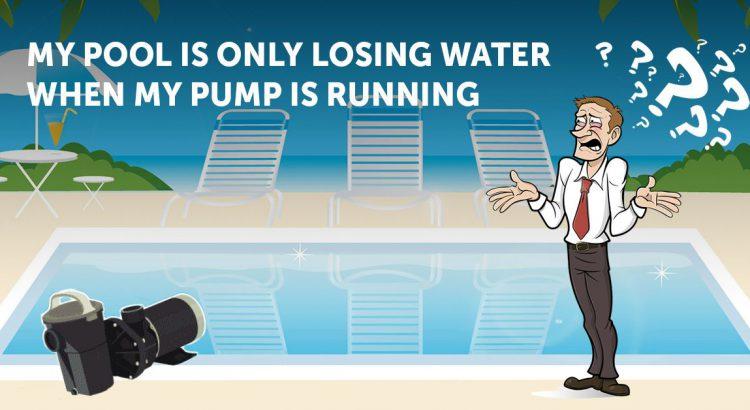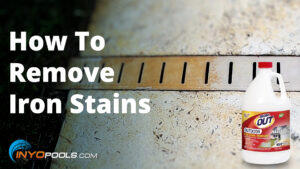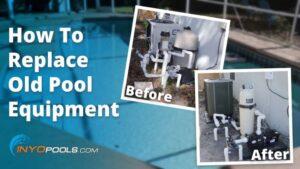Okay, picture it… You walk out to your pool and notice that the water level is lower than normal. So, you play around with the filter and valves and add more water. A few days go by and you notice the water level is low again. Suddenly, it hits you, “My pool is only losing water when my pump is running.”
Great.
As the pool expert you are, you know that it’s not ideal not to have your pump running. Though, what you don’t know is why your pool is only losing water when the pump is running.
Let’s dig a little further…
My Pool is Only Losing Water When My Pump Is Running
Whether it is from evaporation or spillovers, every swimming pool loses water. However, if you’re losing water quickly, it’s something you should address sooner than later.
If you’re reading this article, I will assume you went through the process of elimination and understand that your pool only leaks when you run the pump.
Still, that doesn’t necessarily mean the leak is at your pump. However, it does mean you have a pressure side leak and not a suction- side leak.
Pressure-side Return Leaks
Generally, if you’re losing water when your pump is running, you have a pressure-side return leak. When you’re running your pump, the plumbing after the pump is under pressure. Often times, this can lead to small leaks and water sprays through your line (from the filter to your return jets.)

The good news? You can eliminate any type of air leaks before the pump and move your focus to after the pump. The bad news? Now, you have to find the leak. Where do you start?
Check All the Connections
The first areas you want to check for any leaks are the connections, unions, elbows, and your pump to filter hoses. Normal wear and tear, overtightening, and physical damage to unions can contribute to water leaks.
Make sure to check your pump, filter, chlorinator, and heater, as well. If your pool heater is leaking, you want to act fast. A leaking heater can impact the internal parts, which may or may not be covered under the manufacture’s warranty.
For above-ground pools, don’t forget to inspect the pump to filter hoses. In many instances, the coupling, unions, or hose is under large amounts of pressure and will spring a leak. Also, over time, hoses can become brittle and under pressure, spring a leak.
Filter Multiport Valve
The multiport valve is important because it helps to control the flow of your pool water. As a result, a lot can go wrong. Check the in and out ports on the valve as well as the area around the cover.
Another common source of a leak is the backwash hose. Check the end of the backwash hose for any water running when it shouldn’t be.
Internal leaks may also occur in a defective filter multiport valve. This might cause you to lose clean water down the waste line or backwash line. Another culprit inside the valve is your spider gasket. Damaged or compromised spider gaskets can certainly cause a water leak.
For more information, we recommend reading:
Return Jet/ Return Jet Fittings
Other areas to check are your returns and return jet fittings. Often times, when installing a new liner, a leak can form around one of the fittings. Although it isn’t supposed to happen, installers can make mistakes while installing a new liner, making it difficult to identify.
We also recommend walking around the perimeter of your pool to check for wet spots or small puddles of water. Locating a soft or wet spot in your yard might help to identify the source and location of your leak.

Pressure Test Your Return Lines
Unfortunately, some leaks aren’t easily noticeable. If you cannot find any leaks, then you may need to do a pressure test. If you are unfamiliar with pressure testing your return lines, we recommend hiring a local pool guy.
Still, you can perform a pressure test yourself with a few winterizing plugs, a small compressor, and a little plumbing to connect a Schrader valve and gauge to the pipe leaving your filter. You can find pressure testing kits at your local hardware and supply store.
A pressure test of the return lines will show you if there is a leak in one of the pipes that carry water back to the pool. However, the test will not give an exact location where. Basically, it ranges from where the pipes go underground at the equipment and anywhere between where they end at the pool.
Can’t Find The Leak?
What happens if you cannot locate the leak? Call a professional because that’s what they’re there for, right? Seriously, in some instances, it’s best to seek the help of a professional. Leak detection companies can perform a series of tests that will help determine where the leak is and help fix the leak.
If after reading this article you think you may have a suction-side leak, we recommend reading our article HERE.
Or, if you have any more questions about pressure- side return leaks, please feel free to leave a comment or reach out to us via our chat system on our website.












Leave a Reply